Kibo-ABC Member Countries’ News: So excited with unexpected results! Asian Try Zero-G 2018 was performed by JAXA astronaut Norishige Kanai
Last Updated: February 15, 2018
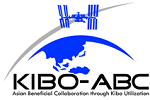
On February 13th, experiments for Asian Try Zero-G 2018 were successfully conducted by JAXA astronaut Norishige Kanai at ISS/ Kibo. Eight experiments which were selected from over 160 ideas submitted from students and young scientist/engineers around Asia were conducted.
19 students and young scientist/engineers from Indonesia, Japan, Philippines, Singapore and Thailand whose ideas were selected visited the “Kibo” Mission Control Room (MCR) in JAXA Tsukuba Space Center on February 13th to observe their onboard experiments with Kibo-ABC member agencies, Indonesia:National Institute of Aeronautics and Space (LAPAN); Singapore:Singapore Space and Technology Association (SSTA); and Thailand:National Science and Technology Development Agency (NSTDA). They watched their experiments conducted onboard Kibo and had a great experience observing the real-time operation.
For the first time, Japanese students (Namiki Secondary School and Meikei High School) participated to Asian Try Zero-G as a member of Asian countries. Also, some of the experiment items were prepared by the proposed countries and launched, then used by astronaut Kanai as the first attempt.
When all the experiments were completed, Astronaut Kanai expressed his thankfulness toward the students and young scientist/engineers around Asia who participated to this program, and anticipation of their future. He also mentioned that he hoped the Asian cooperation would be facilitated through using Kibo.
Closing remarks by Astronaut Kanai
Thank you very much for the very very interesting and fun ideas and proposals. And I’d like to say thank you so much for all the individuals and organizations of the member of Kibo-ABC, make this event happen. I really appreciate that.
Couple words to today’s guests, these were very very interesting experiments, ideas and I was very very impressed.
Please keep asking questions and continue making questions for your teachers, for your friends and for yourself. Sometimes no one can answer your question, it’s OK. Because eventually you can try experiments and find the answer to your original question by yourself.
That is the way that science and our culture have developed. This is very good example of how we research, how we study scientific fact. And you are very very talented people.
Maybe in the future, let’s say 5 years from now, 10 years from now, you, yourself may be working in space. in the space station or other outpost in the space, doing same kind of interesting experiments for the younger generations all over the world.
Nowadays, space is getting closer and closer for everyone to use, or can fly to space. I hope Japanese Module “Kibo” is opening door for you to utilize the space environment.
This is very unique environment. And we are doing lots of research every day in the space station. That is a purpose of why the astronauts are working and living in space. I hope everybody enjoyed today’s session. Again, thank you so much for your cooperation and participation.
Thank you for coming, special guests! I’m looking forward to seeing you in person in the future.
Please refer the link below about experiment themes.
Photos & Videos of experiments are available below.
Please refer to the enclosed paper for using photos & videos.
- Photo [ZIP: 14.9MB]
- Videos1 (Opening remarks) [ZIP: 219MB]
- Videos2 (Paper Boomerang) [ZIP: 1.3GB]
- Videos3 (Aircraft Stability) [ZIP: 1.5GB]
- Videos4 (Spinning Ring) [ZIP: 399MB]
- Videos5 (Gyroscope & Tippe Top) [ZIP: 1.4GB]
- Videos6 (Wire Top) [ZIP: 1.1GB]
- Videos7 (Balls inside Slinky) [ZIP: 972MB]
- Videos8 (Paper Spring) [ZIP: 1.2GB]
- Videos9 (Double-Layered Liquid Ball) [ZIP: 2.1GB]
- Videos10 (Closing remarks) [ZIP: 464MB]
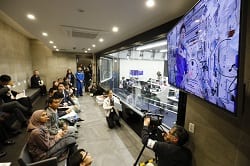
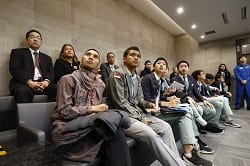
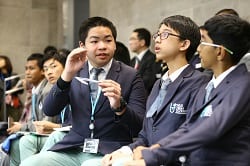

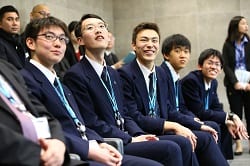


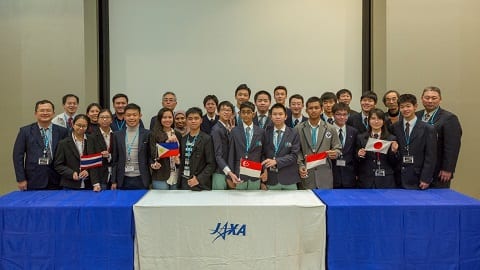
Comments are closed.